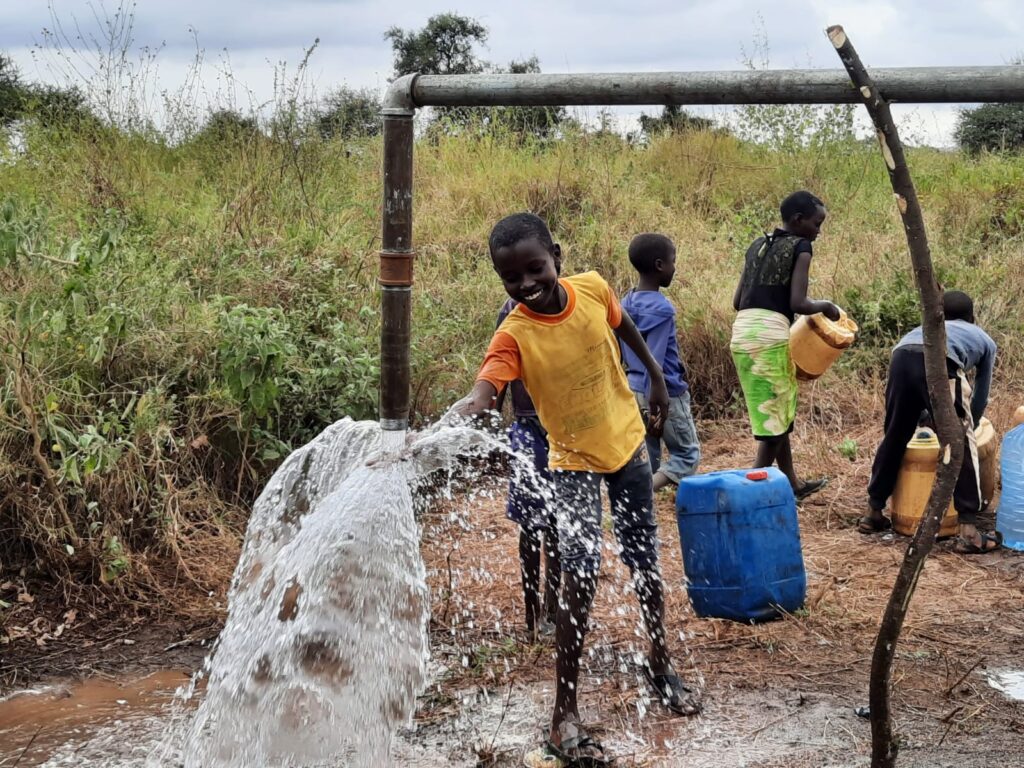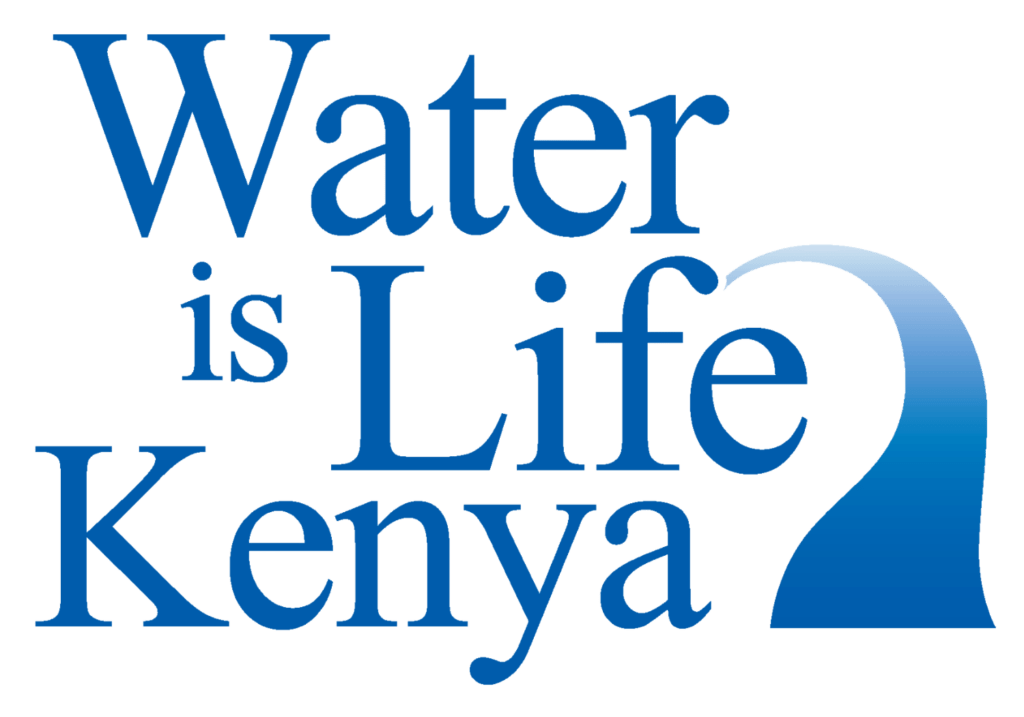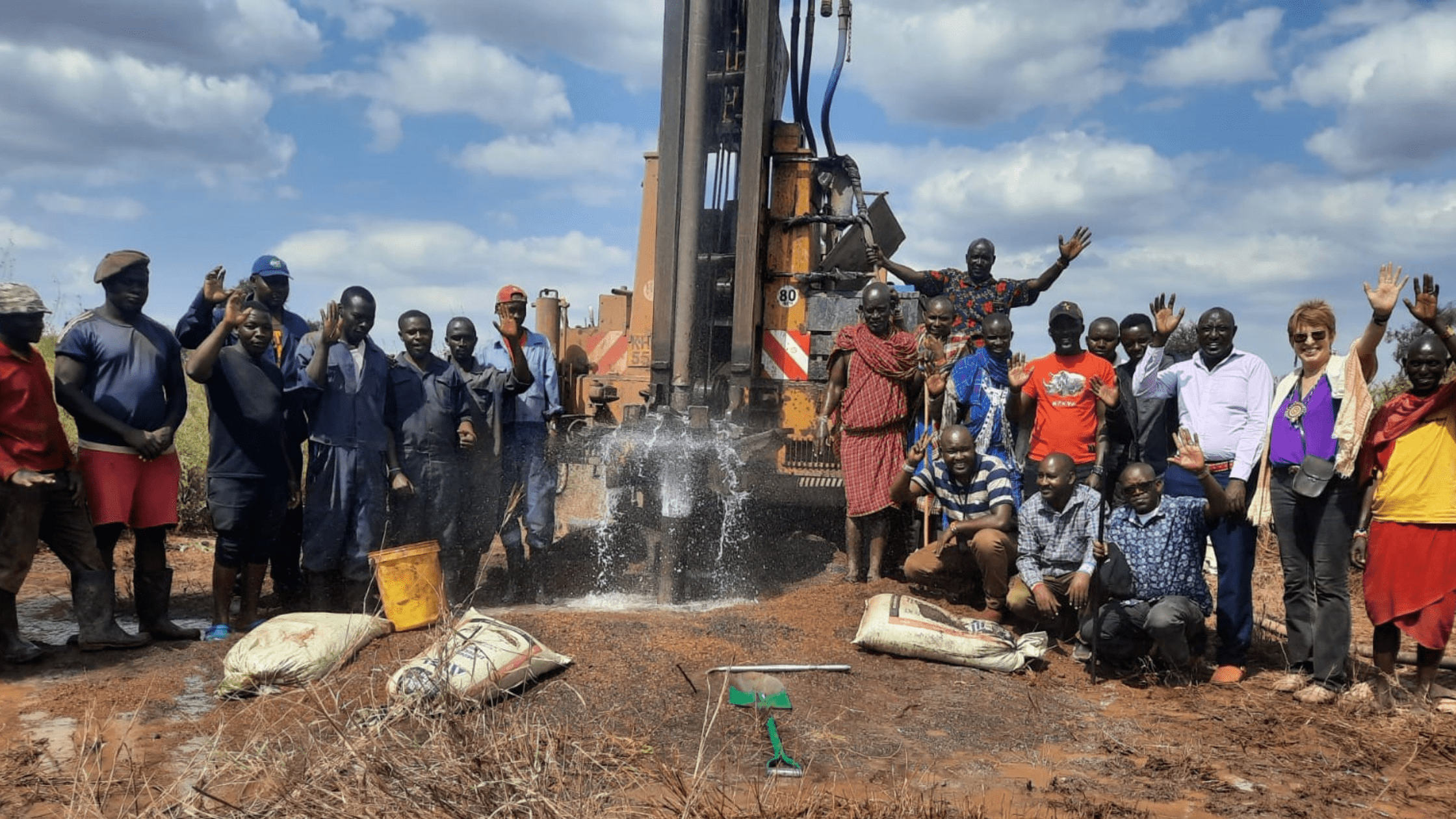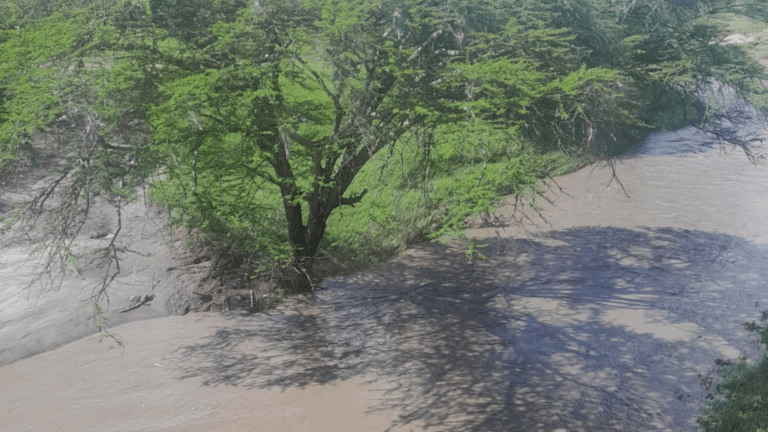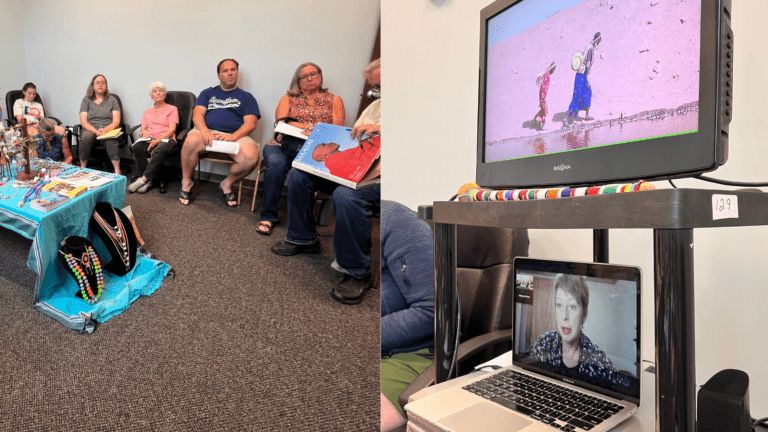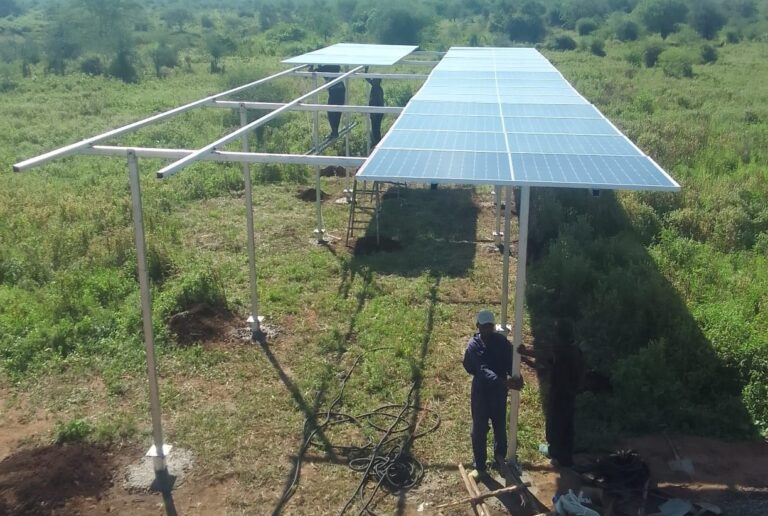It’s been a long time coming for the Olmoti community. Because of their hard work, Global Linkages Ambassadors have raised over $60,000 of the $100,000 goal in the past few months. Now, we’re at perhaps the most exciting part of the borehole process: Drilling in Olmoti! Let’s go over some of the highlights from the progress of our newest borehole project.
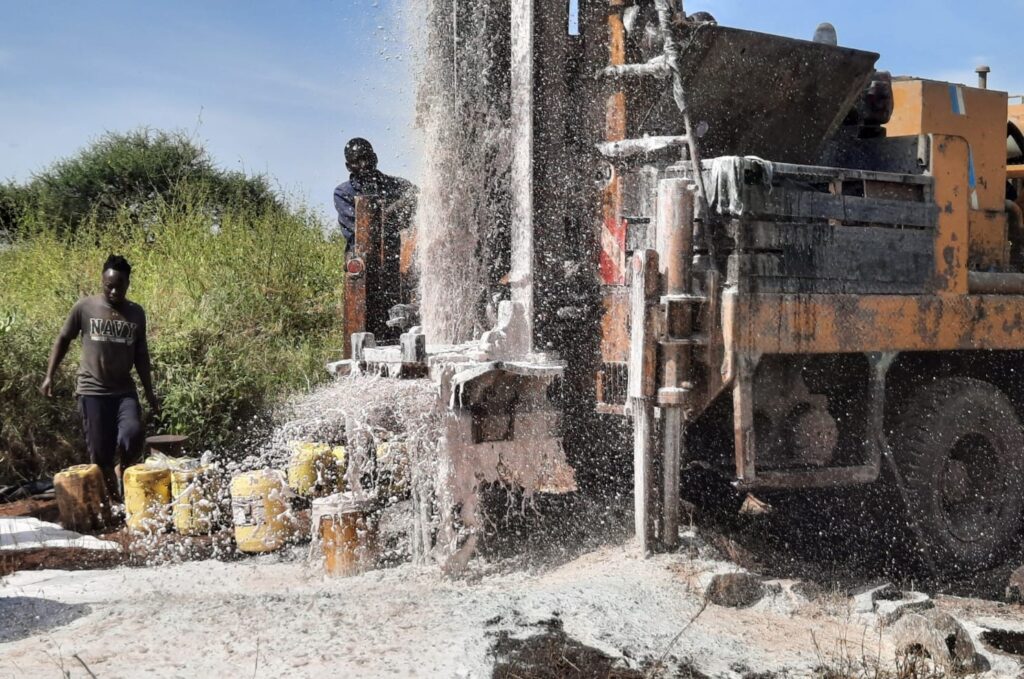
Breaking Ground, Solving Problems
When drilling in this region, which is right near the volcanic Mt. Kilimanjaro, we never know what lies below the surface. Earlier this year, the hydrogeological survey told us where the water was, but the kind of rocks underneath were a mystery until drilling happened.
On June 30, we broke ground. The conditions were less than ideal. Olmoti’s soil is volcanic, so it’s filled with minuscule pockets of air. During drilling, the pulverized rocks shot out of the borehole via compressed air. The walls of the borehole also were too loose, so they collapsed several times.
The volcanic soil was also loose. As water was ejected from the borehole, that water was absorbed into the air pockets. The soil turned muddy, and the collapsing walls of the borehole caused several delays in drilling. Fortunately, our team was on the ground monitoring the drilling the entire time. At each road bump, we helped the drillers problem-solve, communicate with their boss in town, and devise solutions. For example, we solidified the walls of the trouble zone with 8-inch casings so drilling could continue.
After 50 meters of arduous drilling, we hit first water—which is in abundance. After a day of drilling, you could put your ear to the borehole and hear it slushing around at the bottom. In total, we drilled 312 feet, or 95 meters, to tap into the lower aquifer so Olmoti’s borehole won’t run dry.
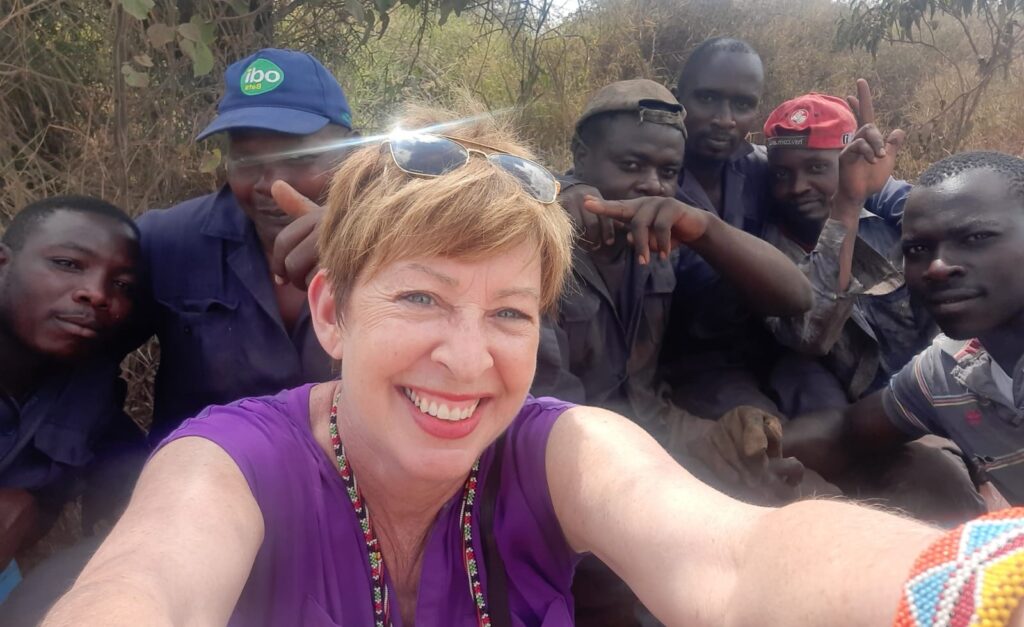
What Comes Next
Test pumping followed a week later. The pump ran for 4 hours at 15,000 liters/hour, and the water level didn’t change. This tells us the water will flow well and consistently while not depleting the supply. The water itself is also clean, which means it’s potable. Many people showed up for test pumping and filled their jerry cans so they could bring water home without having to walk for hours to find it.
The next phase of this project is construction. As always, not only do we have to build the infrastructure needed to support the borehole and make it functional, we also have to elephant-proof it. Reinforced concrete will prevent elephants from destroying the borehole as they try to retrieve the now-accessible water. There will also be a pump house, water point, water tank, latrines, and other features built around the borehole. To run the borehole, a water pump and solar panels will be added.
Our boreholes in Kenya are expensive, but that’s because they need to sustain the community. Once the project is completed, women and girls will no longer have to walk up to eight hours a day to find water. This will give women the opportunity to earn money to send their children to school—and girls will have a chance to attend, too, because the cost will no longer be prohibitive.
Lives are going to change for the better! Thank you for believing in this borehole project and supporting the Olmoti community. We can’t help them without you, and we look forward to more good news about the Olmoti borehole!
